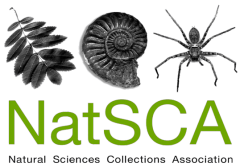UV light as a diagnosis tool for conservation and restoration in natural history collections
The use of ultraviolet light for conservation and restoration in art collections is a common practice. In natural history collections, reaction to UV has been spotted in numerous animal groups; biofluorescence is widespread in the animal kingdom. Here it is the potential of UV light in terms of conservation and restoration of natural history specimens that is explored. UV-induced visible luminescence (UVL) of natural materials are characterized and complemented by actual examples of restored specimens under both regular and UV light. Carpet beetles attack can be spotted due to bright frass, but not other pests and mould in a conclusive way. Restored parts are identified due to glowing inconsistencies. Unusual treatments and dirt may also be distinguishable. It is therefore possible to inspect the integrity and authenticity of specimens, e.g. new acquisitions, and to adapt conservation treatment. As a help to diagnosis, it does not replace the judgement of a conservation
specialist.
